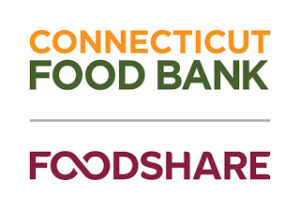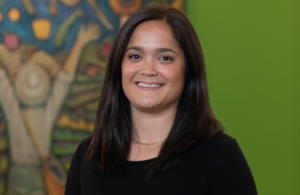The clients and agencies of the combined Connecticut Food Bank and Foodshare are already benefiting from the week-old merger of the two organizations.
The January 30th agreement brings together Foodshare, with $14 million in 2019 revenue and operations in two counties, with the much larger Connecticut Food Bank, with $48 million in 2019 revenue and operations in the remaining six counties. Foodshare President and CEO Jason Jakubowski will become head of the new organization, resolving a leadership vacancy at Connecticut Food Bank, which had been without a CEO since early 2020.
The combined organization will be able to address food insecurity across Connecticut in a unified way. Already, the new food bank, which has yet to be named, is replicating a mass emergency food distribution, formerly operated by Foodshare at a single site, at three additional locations around the state. And complementary programs can now be expanded uniformly statewide. Connecticut Food Bank, for example, provides food boxes to seniors, while Foodshare offers summer meals for kids.

“This is a genuine merger of two very healthy, strong organizations,” Jakubowski said. The united entity will have a network of 700 pantry agencies, 115 employees, more than 8,000 volunteers and representation from both boards on its 23-member board of directors.
Perhaps the biggest plus for the 450 or so Connecticut Food Bank pantry agencies coming into the combined network will be their ability to more easily access the resources of Foodshare’s Institute for Hunger Research and Solutions. A rarity among food banks, the Institute offers best-practices services and consulting to food pantries across the country.
A signature offering from the Institute is a nutrition ranking system designed to promote healthy food choices, known as SWAP for Supporting Wellness at Pantries. Currently used by about 20 food banks and dozens of pantries across the country, the system uses the green-yellow-red color scheme of a stoplight to indicate food that should be chosen often, sometimes, or rarely by pantry clients, based on the Healthy Eating Research nutrition guidelines adopted by Feeding America.
Jakubowski launched the Institute in 2019, only two years after coming to Foodshare from the nonprofit healthcare sector, and named Katie Martin, PhD and author of Reinventing Food Banks and Pantries, as its director.
The Institute fulfills the food bank’s vision of operating as an anti-poverty agency, not simply a provider of food. “Our obligation is not just to provide edible products for people, but to work with them and their families to deliver them out of poverty,” Jakubowski said.
 Foodshare takes this obligation seriously, having allocated $1 million in expenses in its 2020 financial report toward “Building a Movement to Solve Hunger.” In addition to the Institute, this effort includes the food bank’s SNAP outreach team, which includes two staffers and a cadre of volunteers, as well as support for its Hunger Action Teams, which convene members of the community to help address local hunger.
Foodshare takes this obligation seriously, having allocated $1 million in expenses in its 2020 financial report toward “Building a Movement to Solve Hunger.” In addition to the Institute, this effort includes the food bank’s SNAP outreach team, which includes two staffers and a cadre of volunteers, as well as support for its Hunger Action Teams, which convene members of the community to help address local hunger.
The new organization features the creation of a new leadership position that will liaise with the agency network. Previously housed under operations, the activities of the new Chief Network and Program Officer will now make up a separate organizational unit. “By having two separate positions, I wanted the agency network to know that they now have an entire structure that’s there for them,” Jakubowski said. He gave credit for the idea to Claire Babineaux-Fontenot, who he said made a similar change when she became CEO of Feeding America.
Mergers between food banks are relatively uncommon. Just over a year ago, Food Bank of Western New York merged with the local Meals on Wheels program to create FeedMore WNY of Buffalo. At the end of 2018, St. Stephen’s Food Bank became part of River Bend Food Bank, creating the largest food bank in Iowa with $40 million of 2019 revenue, according to the Food Bank News ranking of the top 100 food banks.
The Iowa merger enabled St. Stephen’s to access various resources of River Bend, including a bigger warehouse, refrigeration and an online ordering system, all of which has helped the combined organization deliver three times more meals now than in 2014, said Mike Miller, President and CEO of River Bend Food Bank.
Food bank mergers raise the question of whether clients are best served by having hundreds of independently operated food banks across the country, Miller noted. “Certainly there are other areas of the country where organizations could collaboratively look at the best way to get everyone fed,” he said, noting “the person experiencing hunger should be at the center of every decision we make.”
CAPTION ABOVE: Emergency food distributions like this one in central Connecticut have been expanded to three additional sites with the merger of Foodshare and Connecticut Food Bank.
Photo credit: Foodshare
Like what you’re reading?
Support Food Bank News












